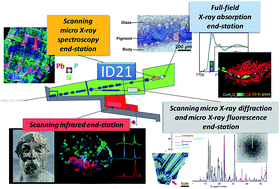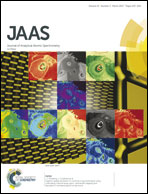The ID21 X-ray and infrared microscopy beamline at the ESRF: status and recent applications to artistic materials
Abstract
The ID21 beamline (European Synchrotron Radiation facility, France) is a multi micro-analytical platform combining X-ray and infrared micro-probes, for characterization of elements, species, molecular groups and crystalline structures in complex materials. Applications are mainly in the fields of cultural heritage, life science, environmental and earth sciences, materials sciences. Here, we first present the status of instruments: (i) the scanning micro-spectroscopy end-station, operating from 2.0 to 9.2 keV, under vacuum and offering cryo conditions, for the acquisition of 2D micro X-ray fluorescence (μXRF) maps, single point micro X-ray Absorption Near Edge Structure (μXANES) spectra and speciation maps with sub-micrometric resolution; (ii) the XANES full-field end-station, operating in the same vacuum and energy conditions, for the acquisition of hyper-spectral radiographs of thin concentrated samples, resulting in speciation maps with micrometric resolution and millimetric field of view; (iii) the scanning micro-X-ray diffraction (μXRD)/μXRF end-station, operating at 8.5 keV, in air, for the acquisition of 2D crystalline phase maps, with micrometric resolution; and (iv) the scanning infrared microscope, operating in the mid-infrared range for the acquisition of molecular maps and some structural maps with micrometric resolution. Recent hardware and software developments are presented, as well as new protocols for improved sample preparation of thin sections. Secondly, a review of recent applications for the study of cultural heritage is presented, illustrated by various examples: determination of the origin of the color in blue Chinese porcelains and in brown Sèvres porcelains; detection of lead in ink on Herculaneum papyri; identification and degradation of modeling materials used by Auguste Rodin and of chrome yellow pigments used by Vincent van Gogh. Cryo capabilities are illustrated by the analysis of plants exposed to chromate solutions. These examples show the variety of materials analyzed, of questions tackled, and particularly the multiple advantages of the ID21 analytical platform for the analysis of ancient and artistic materials.



 Please wait while we load your content...
Please wait while we load your content...